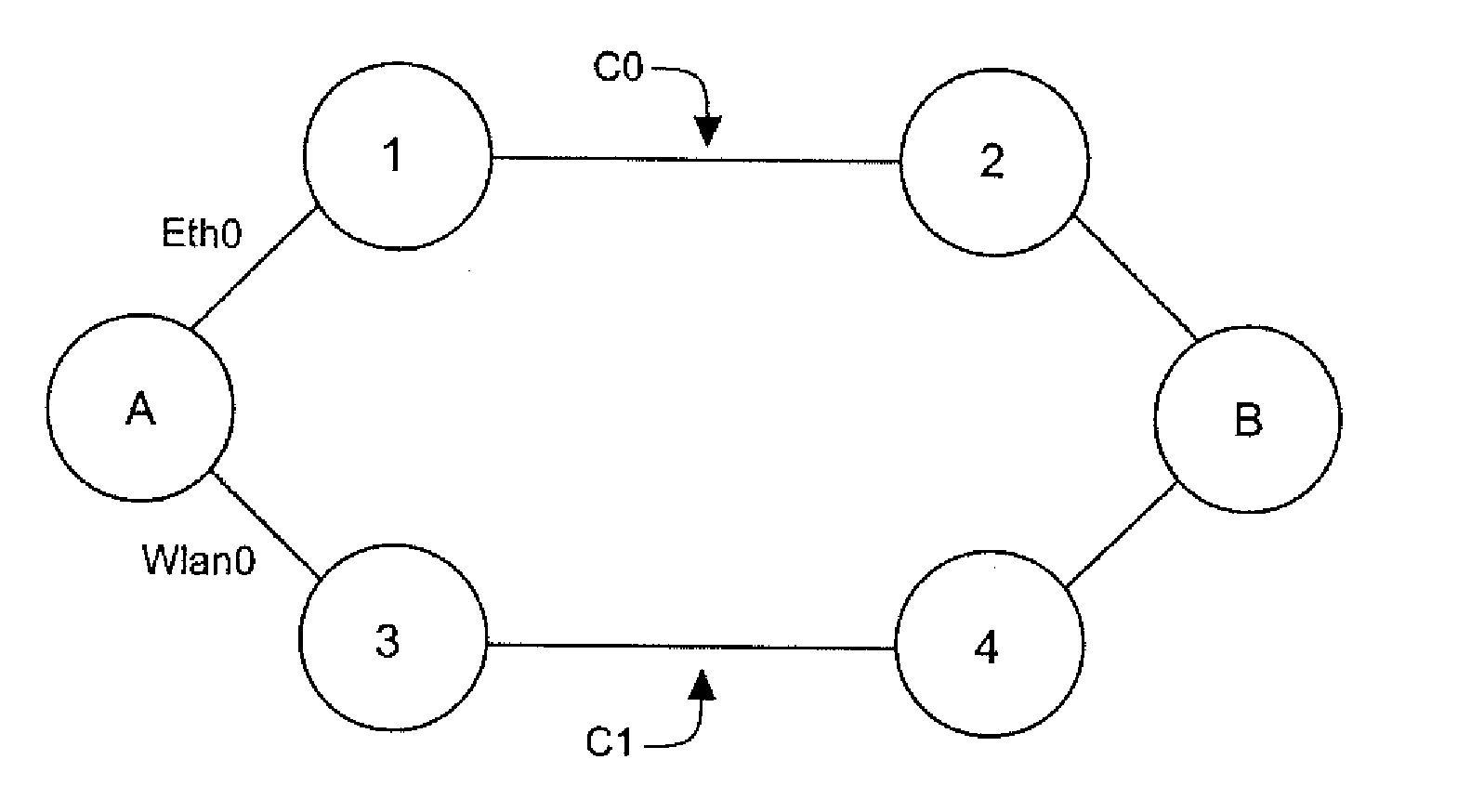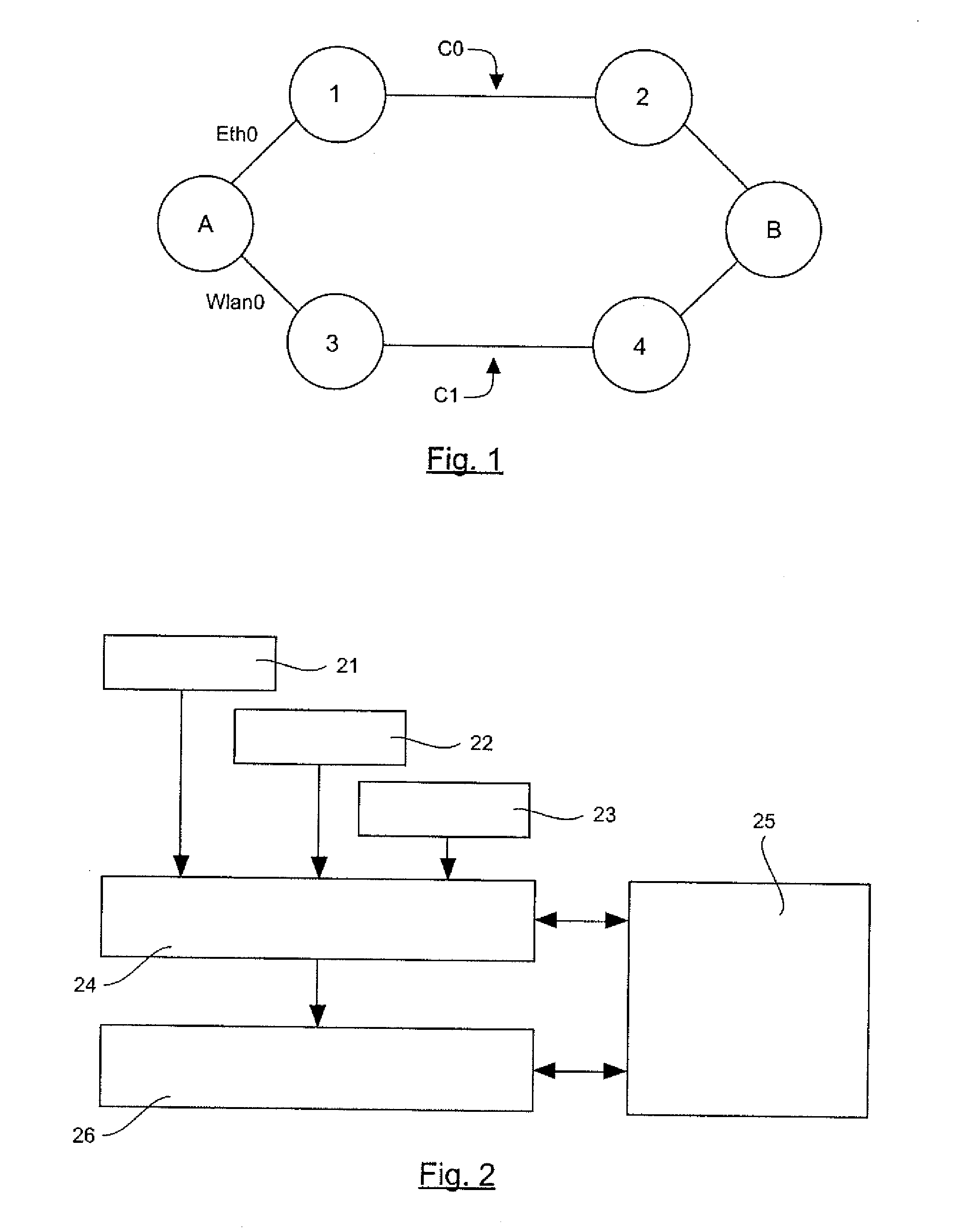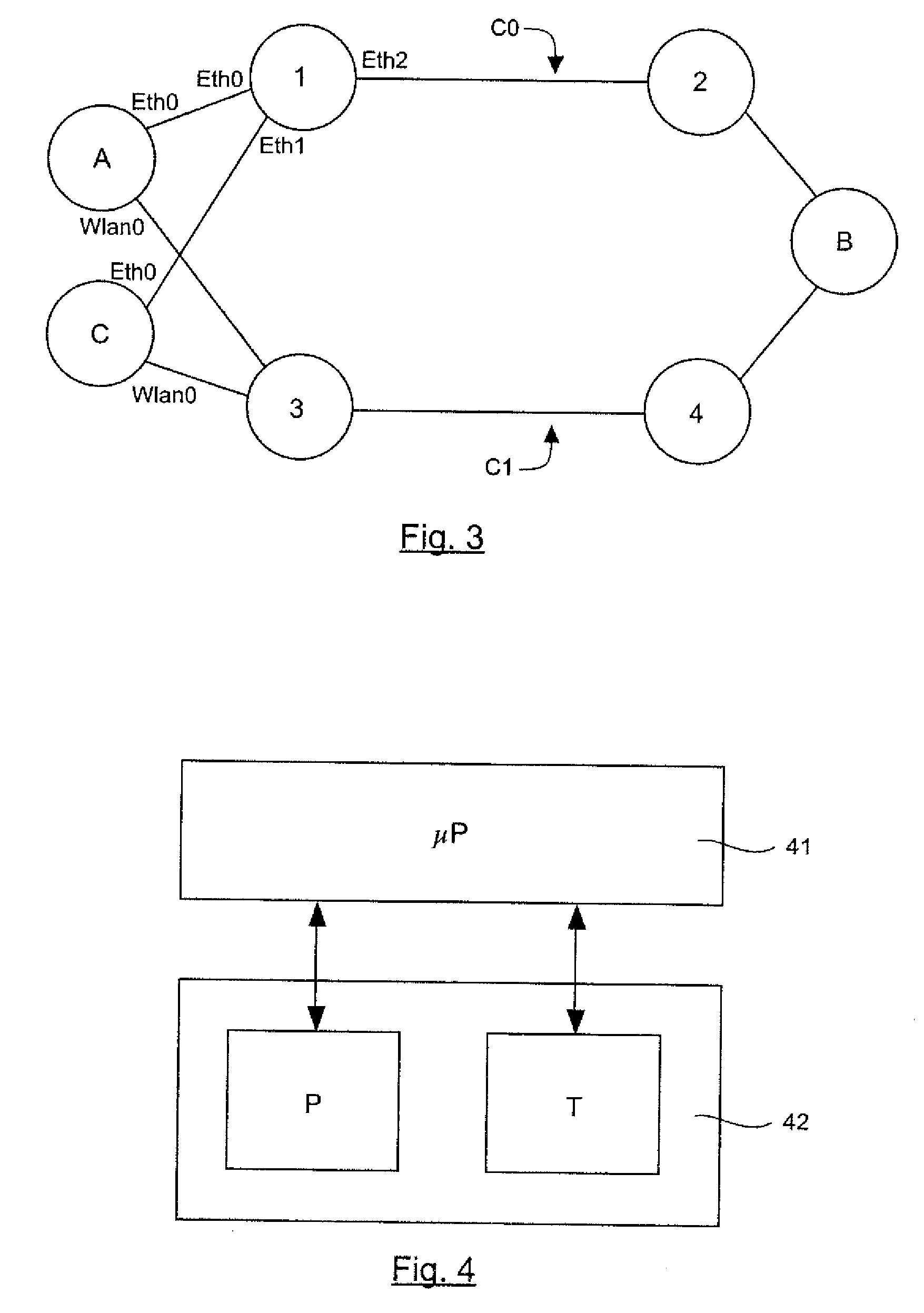Method for managing paths between a source node and a destination node within the data link layer, corresponding source node and table
a technology of data link layer and source node, applied in the field of managing paths between source node and destination node within the data link layer, corresponding source node and table, can solve the problems of inability to provide special solutions, difficulty in transmission of additional flow, and itself runs the risk of becoming saturated
- Summary
- Abstract
- Description
- Claims
- Application Information
AI Technical Summary
Benefits of technology
Problems solved by technology
Method used
Image
Examples
Embodiment Construction
[0052]An embodiment of the invention therefore proposes a novel approach to the transmission of flows in the data link layer (level 2 of the OSI system) adapted to the mesh network, enabling the definition of several paths between a source node and a destination node. In particular, it may be a meshed Ethernet network or a multi-technology network, the nodes of which have at least two distinct interfaces, capable for example of respectively managing the Ethernet protocol, a Wi-Fi transmission or transmission by power link communications (PLC).
[0053]According to an embodiment of the invention, a solution is proposed enabling the management of multiple paths in the data link layer to distribute if necessary the flows to be transmitted between a source node A and a destination node B, especially as a function of their category.
[0054]The category of a flow may be a class of service representing the type of its content (video, audio). It may simply take into account a level of importance...
PUM
 Login to View More
Login to View More Abstract
Description
Claims
Application Information
 Login to View More
Login to View More - R&D
- Intellectual Property
- Life Sciences
- Materials
- Tech Scout
- Unparalleled Data Quality
- Higher Quality Content
- 60% Fewer Hallucinations
Browse by: Latest US Patents, China's latest patents, Technical Efficacy Thesaurus, Application Domain, Technology Topic, Popular Technical Reports.
© 2025 PatSnap. All rights reserved.Legal|Privacy policy|Modern Slavery Act Transparency Statement|Sitemap|About US| Contact US: help@patsnap.com



